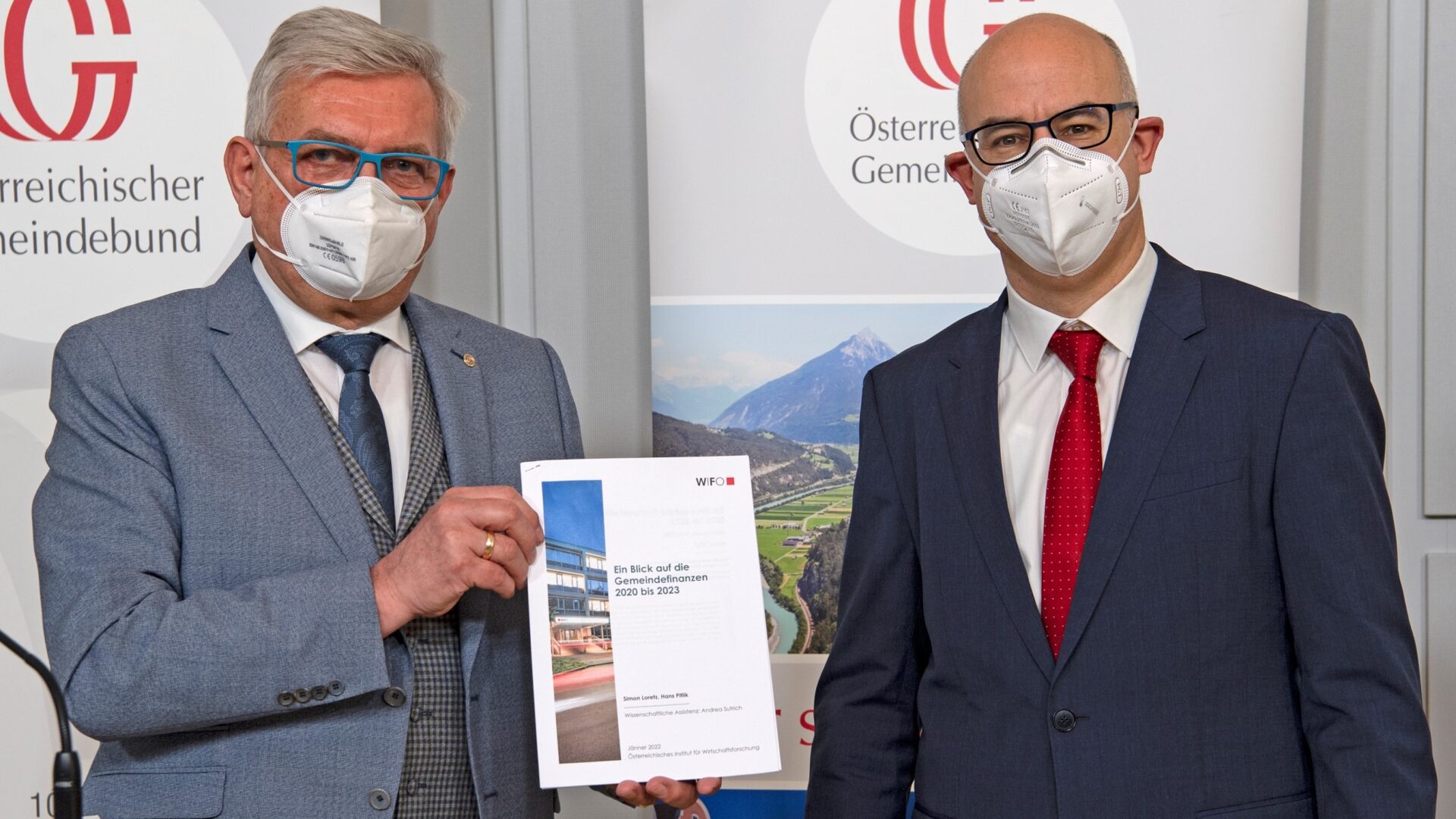
Municipal Public Finances in Austria 2020 to 2023
Economic and budgetary developments in Austria have been shaped by the COVID-19 pandemic since 2020. The massive economic slump constitutes a major challenge for the financial situation of Austria's municipalities. However, the implementation of a reformed budgetary law at the municipal level as of 2020 makes comparisons of fiscal results with the years before 2020 considerably all the more difficult.
Investment capacity and investment spending
In 2020, surplus of inflows over outflows from operating activities of all municipalities (excluding Vienna), amounted to 1.86 billion €. The free fiscal margin, a key measure of municipal scope for new investment projects, increased from 598 million € in 2019 to 680 million €. For municipalities, investment capacity has not deteriorated on average despite the crisis year 2020.
Investment spending in 2020 increased by 172 million € to 3.14 billion € despite the crisis. This compares with payments of 215 million € from the federal government to municipalities under the municipal investment package in 2020.
Debt and deficit
In the crisis year 2020, municipalities observed a sharp increase in financial debt of 8.2 percent to a total of 12.875 billion €. Per capita financial debt of the municipalities rose to 1,850 €.
The general government Maastricht deficit of 31.5 billion € was largely accounted for by the federal level (28.5 billion €). For the municipal level, the deficit was limited to 253 million € in 2020, after a deficit of 281 million € was recorded in 2019. Government debt in ESA terms increased to 315.6 billion € at the end of 2020. The municipal level (excluding Vienna) accounts for 9.67 billion €, a share of only 3.1 percent.
Economic development up to 2023
Economic developments in the COVID-19 pandemic caused considerable fiscal stress from spring 2020 onward. After the slump in the GDP growth rate of –6.7 percent in the first year of the crisis and real GDP growth of +4.1 percent in 2021, strong economic growth of +5.2 percent is expected for 2022. In 2023, Austria's economy is expected to observe a moderate growth rate (+2.5 percent). The recovery in 2022 and 2023 will differ by economic sector. Communities with local economic structures that were significantly affected by the health policy restrictions (e.g., tourism) are expected to benefit.
Tax reform 2022-2024
Expectations about the budgetary situation of municipalities in 2021 to 2023 are determined, on the one hand, by the projected positive economic development. On the other hand, the revenue momentum of the joint federal taxes will be curbed from 2022 onward due to the eco-social tax reform. Revenue shortfalls in personal income tax and corporate income tax expected for 2022 and 2023 total around 5.05 billion €. The municipalities as a whole (including Vienna) will bear a share of around 12 percent of the revenue shortfall, which amounts to a cumulative total of around 600 million €.
Municipal joint tax shares and municipal tax
In 2021, municipal joint tax shares show a revenue plus, which can compensate for the losses from 2020. For 2022, the simulation based on the WIFO tax projections suggests revenue share growth of +6.8 percent despite the wage and income tax relief provided by the eco-social tax reform, which is expected to decline slightly to +4.8 percent in the following year 2023.
During the COVID-19 crisis, a significant share of wages and salaries was paid from Corona short-time work subsidies, from which no municipal tax ("Kommunalsteuer") is payable, resulting in a significant drop in revenues in 2020. In 2021, municipal tax revenues are expected to increase by +7.1 percent. The strong wage and employment growth will lead to further strong year-on-year increases of +6.7 percent in 2022 and +5.1 percent in 2023.
Publications
Please contact

























